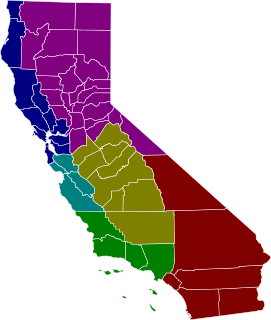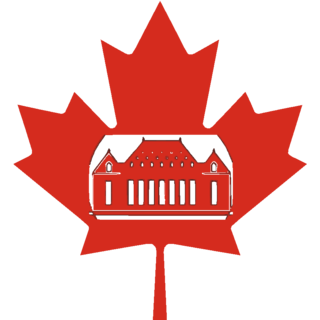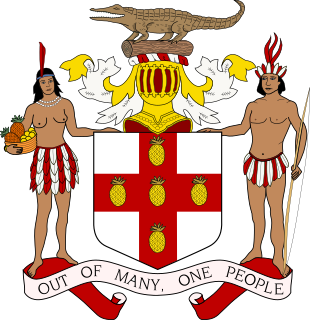
The Supreme Court of Canada is the highest court in the judicial system of Canada. It comprises nine justices, whose decisions are the ultimate application of Canadian law and grants permission to between 40 and 75 litigants each year to appeal decisions rendered by provincial, territorial and federal appellate courts. The Supreme Court is bijural, hearing cases from two major legal traditions and bilingual, hearing cases in both official languages of Canada.
In common law systems, a superior court is a court of general competence which typically has unlimited jurisdiction with regard to civil and criminal legal cases. A superior court is "superior" in relation to a court with limited jurisdiction, which is restricted to civil cases involving monetary amounts with a specific limit, or criminal cases involving offenses of a less serious nature. A superior court may hear appeals from lower courts. The highest of the superior courts is the Supreme court.

The Queen's Bench (French: Cour du banc de la Reine ; or, during the reign of a male monarch, the King's Bench, is the superior court in a number of jurisdictions within some of the Commonwealth realms. The original King's Bench, founded in 1215 in England, was one of the ancient courts of the land and is now a division of the High Court of Justice of England and Wales. In the Commonwealth, the term Queen-on-the-Bench, or King-on-the-Bench is a title sometimes used to refer to the monarch in their ceremonial role within the justice system, as the fount of justice in that justice is carried out in their name.
The Federal Court of Canada, which succeeded the Exchequer Court of Canada in 1971, was a national court of Canada that had limited jurisdiction to hear certain types of disputes arising under the federal government's legislative jurisdiction. Originally composed of two divisions, the Appellate Division and the Trial Division, in 2003 the Court was split into two separate Courts, the Federal Court and the Federal Court of Appeal. The jurisdiction and powers of the two courts remained largely unchanged from the predecessor divisions.
The court system of Canada forms the judicial branch of government, formally known as "The Queen on the Bench", which interprets the law and is made up of many courts differing in levels of legal superiority and separated by jurisdiction. Some of the courts are federal in nature, while others are provincial or territorial.
The Superior Court of Justice is a superior court in Ontario. The Court sits in 52 locations across the province, including 17 Family Court locations, and consists of over 300 federally appointed judges.

The judiciary of Australia comprises judges who sit in federal courts and courts of the States and Territories of Australia. The High Court of Australia sits at the apex of the Australian court hierarchy as the ultimate court of appeal on matters of both federal and State law.

The California Courts of Appeal are the state intermediate appellate courts in the U.S. state of California. The state is geographically divided along county lines into six appellate districts. The Courts of Appeal form the largest state-level intermediate appellate court system in the United States, with 106 justices.

The Supreme Court of Georgia is the highest judicial authority of the U.S. state of Georgia. The court was established in 1845 as a three-member panel. Since 1896, the justices have been elected by the people of the state. The justices are currently elected in statewide non-partisan elections for six-year terms, with any vacancies filled through an appointment by the Governor.

The Supreme Court of Canada was founded in 1875 and has served as the final court of appeal in Canada since 1949. Its history may be divided into three general eras. From its inception in 1875 until 1949, the Court served as an intermediate appellate court subject to appeal to the Judicial Committee of the Privy Council in Britain. Following 1949, the Court gained importance and legitimacy as the court of last resort in Canada, establishing a greater role for the Canadian judiciary. In 1982, the introduction of the Canadian Charter of Rights and Freedoms significantly changed the role of the Court in Canadian society, by providing the Court with greater powers of oversight over Parliament and through formal recognition of civil rights including aboriginal rights and equality rights.
The Court of Appeal for Saskatchewan (SKCA) is a Canadian appellate court.
The Superior Court is the state court in the U.S. state of New Jersey, with statewide trial and appellate jurisdiction. The New Jersey Constitution of 1947 establishes the power of the New Jersey courts. Under the State Constitution, "'judicial power shall be vested in a Supreme Court, a Superior Court, County Courts and inferior courts of limited jurisdiction.'" The Superior Court has three divisions: the Appellate Division is essentially an intermediate appellate court while the Law and Chancery Divisions function as trial courts. The State Constitution renders the New Jersey Superior Court, Appellate Division the intermediate appellate court, and "[a]ppeals may be taken to the Appellate Division of the Superior Court from the law and chancery divisions of the Superior Court and in such other causes as may be provided by law." Each division is in turn divided into various parts. "The trial divisions of the Superior Court are the principal trial courts of New Jersey. They are located within the State's various judicial geographic units, called 'vicinages,' R. 1:33-2(a), and are organized into two basic divisions: the Chancery Division and the Law Division".

The supreme court is the highest court within the hierarchy of courts in many legal jurisdictions. Other descriptions for such courts include court of last resort, apex court, and highcourt of appeal. Broadly speaking, the decisions of a supreme court are not subject to further review by any other court. Supreme courts typically function primarily as appellate courts, hearing appeals from decisions of lower trial courts, or from intermediate-level appellate courts.
Superior courts in California are the state trial courts with general jurisdiction to hear and decide any civil or criminal action which is not specially designated to be heard in some other court or before a governmental agency. As mandated by the California Constitution, each of the 58 counties in California has a superior court. The superior courts also have appellate divisions which hear appeals from decisions in cases previously heard by inferior courts.
The Supreme Court of South Africa was a superior court of law in South Africa from 1910 to 1997. It was made up of various provincial and local divisions with jurisdiction over specific geographical areas, and an Appellate Division which was the highest appellate court in the country.
The Government of Guam (GovGuam) is a presidential representative democratic system, whereby the President is the head of state and the Governor is head of government, and of a multi-party system. Guam is an organized, unincorporated territory of the United States with policy relations between Guam and the US under the jurisdiction of the Office of Insular Affairs.
The Eastern Cape Division of the High Court of South Africa is a superior court of law with general jurisdiction over the Eastern Cape province of South Africa. The main seat of the division is at Makhanda, with subordinate local seats at Port Elizabeth, East London, Bhisho and Mthatha. As of November 2017 the Judge President of the division is Selby Mbenenge.

The judiciary of Jamaica is based on the judiciary of the United Kingdom. The courts are organized at four levels, with additional provision for appeal to the Judicial Committee of the Privy Council in London. The Court of Appeal is the highest appellate court. The Supreme Court has unlimited jurisdiction in all cases, and sits as the Circuit Court to try criminal cases. The Parish Court in each parish hears both criminal and civil cases, excluding grave offences. The Petty Sessions are held under Justices of the Peace, with power to hear minor crimes.
The Court of Appeal of Prince Edward Island is the appellate court for the Canadian province of Prince Edward Island, and thus the senior provincial court below the Supreme Court of Canada. As the number of appeals heard by the Supreme Court of Canada is extremely limited, the Court of Appeal is in practice the court of final appeal for most residents of Prince Edward Island.








